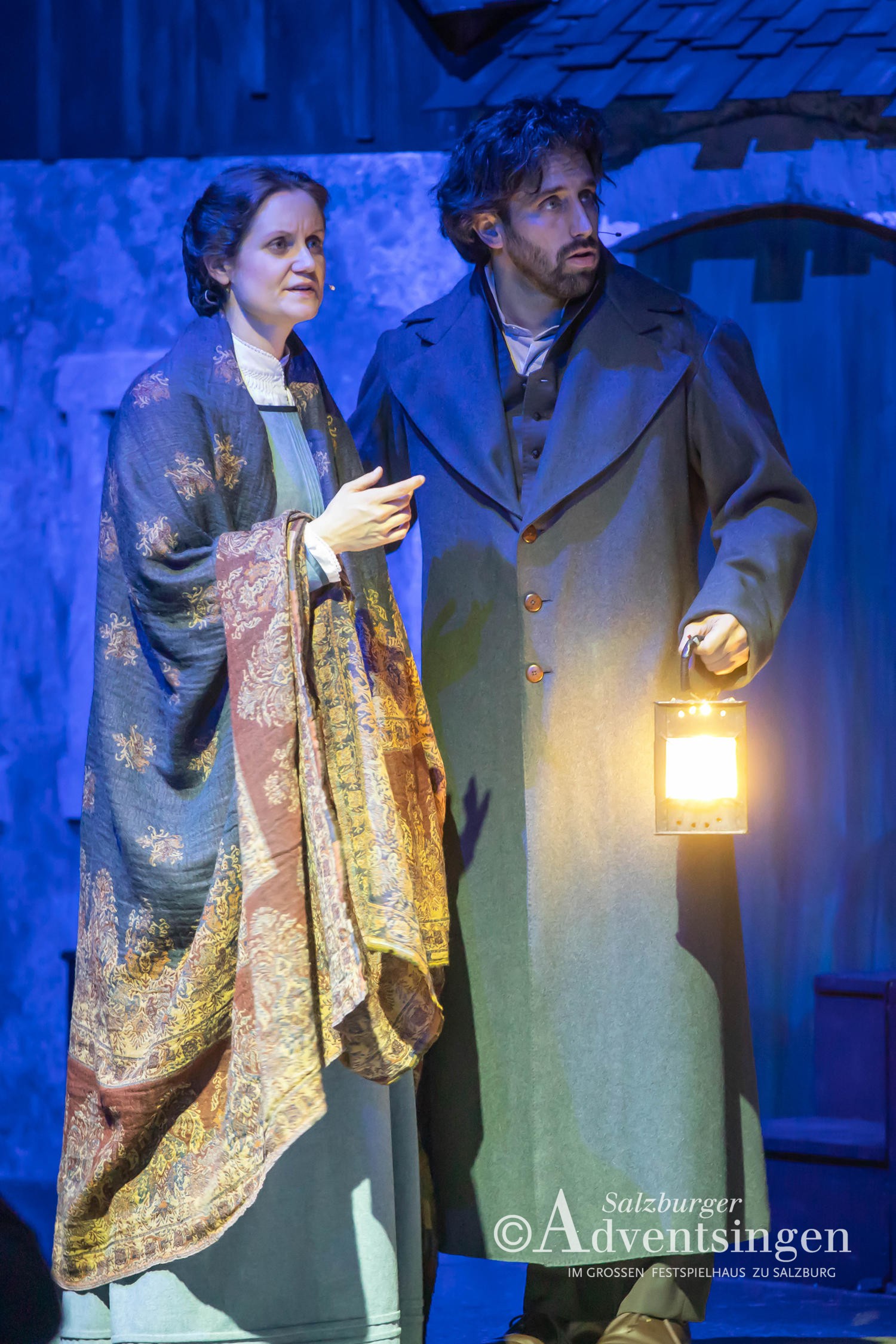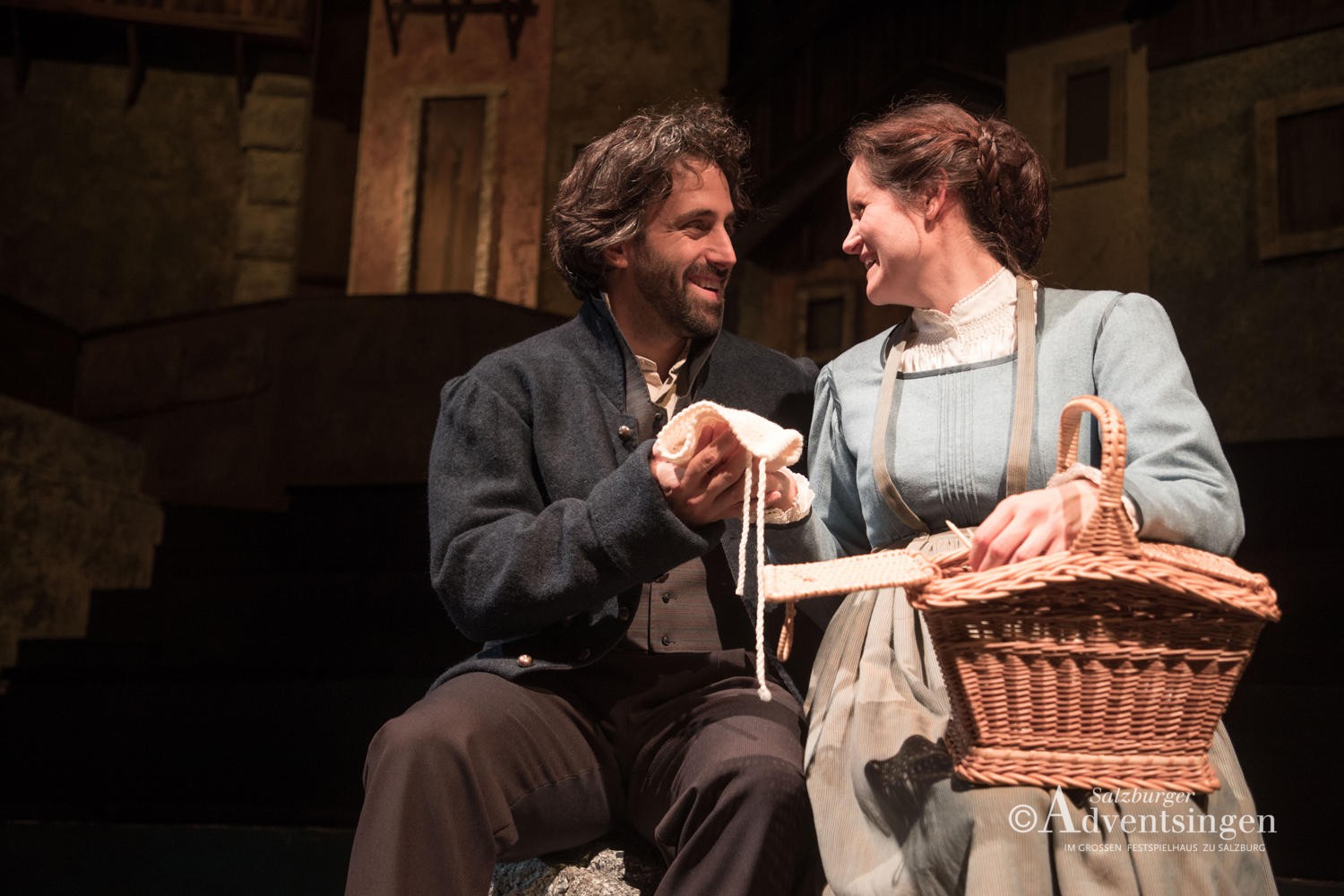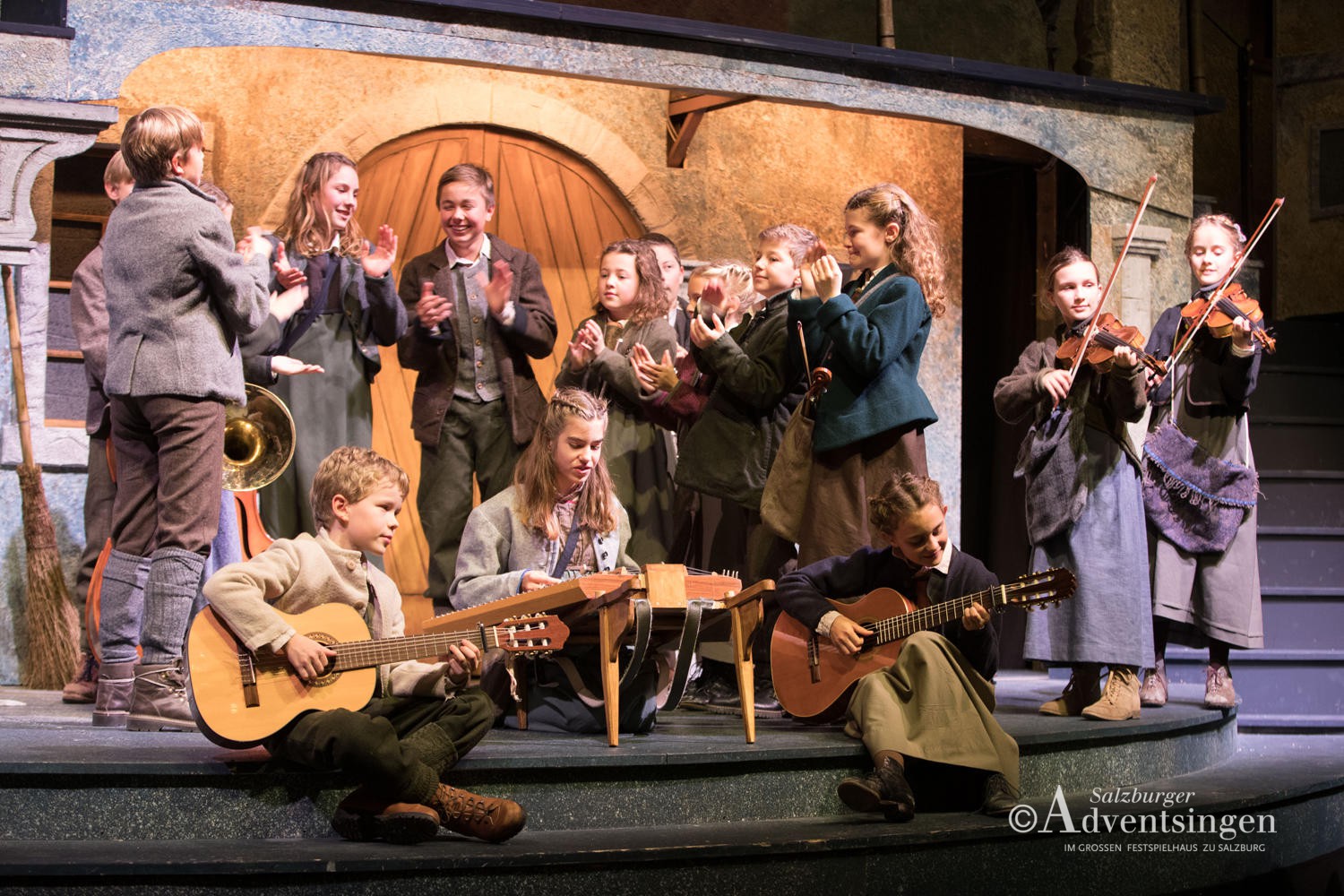The piece 2018
Silent night
"Stille Nacht" 2018
04 Die alte Orgel
2:3505 Haunsberg Polka
2:1906 Rorate
1:2807 Danke sei Gott
0:3808 Ave Maria
3:1010 Angelus-Gebet
1:4812 Kinder der Liebe
2:1316 Das Geheimnis
0:0918 Gedankenaustausch
1:1519 Magnifikat
4:2220 Sehnsucht
1:0923 Der Traum Josefs
2:2324 Grödiger Walzer
1:4925 Glückliche Zeiten
0:3829 Pastorale
1:5431 Meine Stunde naht
2:1635 Versperrte Türen
0:2736 Kein Erbarmen
2:1338 Hirtenmusik
0:5539 Hirtenspiel I
2:4441 Meraner Jodler
1:0742 Hirtenspiel II
2:2344 Hirtenspiel III
0:3546 Hirtenspiel IV
0:2149 Andachtsjodler
2:3450 Die Überraschung
0:57Back to the year 1818
In the 200th anniversary year of “Silent Night”, the Salzburg Advent Singing at the Großes Festspielhaus will focus on the history of the song’s origins. The Advent story of Mary and Joseph is brought to life in the socio-cultural context of Oberndorf in 1818. Salzburg loses its independence as a spiritual and secular prince-archbishopric in 1803 and sinks into insignificance. The Rupertiwinkel is awarded to Bavaria, the rest to the Habsburgs. The small village of Oberndorf is cut off from the town of Laufen by the new state border. Nevertheless, the impoverished aldermen from “Österreichisch-Laufen” are not discouraged. With their traditional Schiffertheater, they put on an Advent play for the first time. Little do they know that after their performance on Christmas Eve, a very special song will be sung for the first time. A song which, in the course of time, grows close to the hearts of all the peoples of the world as a song of peace…


Grateful tribute to Mohr and Gruber
The special relationship between three Salzburg peace initiatives
There were three great, terrible wars that shook Europe over the past two centuries. Wars after which nothing was ever the same again. The French wars (coalition wars), in which Napoleon’s troops, among others, swept across Europe, the First World War with over 17 million dead and the Second World War with around 70 million dead. The unspeakable suffering and atrocities remain unfathomable to this day. After these devastating wars, a great desire for peace and the ever-growing hope for better times allowed three delicate peace seedlings to sprout in Salzburg, which have become unique, internationally renowned cultural ambassadors of peace.
The Salzburg Song of Peace
After the Napoleonic Wars, Joseph Mohr (lyrics 1816) and Franz Xaver Gruber (melody 1818) created the simple pastoral “Silent Night! Heil’ge Nacht” 200 years ago, a song which is now sung in over 300 languages all over the world. Not a great compositional work, no, a simple folk song created by an assistant priest and an organist became the most sung song of peace for all peoples of the world. It became synonymous with the Christian message of peace and a human longing for tranquillity, security and inner peace.
The Salzburg Festspiele
The Salzburg Advent Singing

Stille Nacht – Salzburger Adventsingen – Salzburger Festspiele
Stille Nacht 2018
Picture gallery
The piece 2018
Contributor
Leading Team
Hans Köhl
Klemens Vereno
Caroline Richards
Dietmar Solt
Herbert Böck
Hellmut Hölzl
Stefan Sperr
Solists
Simone Vierlinger (Sopran)
Bernhard Teufl (Tenor)
Elisabeth Eder (Sopran)
Edwin Hochmuth (Bariton)
Martina Gmeinder (Mezzosopran)
Florian Eisner (Bariton)
Konstantin Schrempf (Bariton)
Salzburger Hirtenkinder
Josef Auer (Peterl, Akkordeon), Carolin Altenberger (Rosi, Harmonika), Kiara Atteneder (Marie, Geige), Philip Eder (Urbal, Posaune), Nora Gadringer (Lena, Hackbrett), Valentin Nagl (Anderl, Trompete), Anna Neumayr (Kathi, Gitarre), Marlene Neumayr (Emma, Querflöte), Felix Neureiter (Jakob, Klarinette), Magdalena Neureiter (Sofie, Querflöte), Sarah Oberkofler (Resi, Horn), Johanna Renzl (Lisl, Geige), Lorena Resch (Mirl, Alt-Saxophon), Sebastian Scheibner (Sepperl, Flügelhorn), Leni Seer (Susi, Geige), Thomas Siller (Nazl, Harmonika), Fabian Stockinger (Franzl, Gitarre),Michael Thalmayer (Michi, Kontrabass), Michaela Vitzthum (Wetti, Flügelhorn), Sophie Zeilner (Klara, Geige)
Einstudierung, Betreuung
Hans Köhl, Gesamtleitung, Caroline Richards (Bühnenregie), Gudrun Köhl-Korbuly, Markus Helminger, Simon Haitzmann, Hildegard Stofferin
Orchester
Lg: Maria Dengg (Geige), Andrea Brucker (Bratsche), Timea Laczkò-Tòth (Cello), Burgi Vötterl (Geige),
Franz Obermair (Kontrabass)
Lg: Reinhold Schmid (Gitarre; Arrangements), Kerstin Schmid-Pleschonig (Hackbrett), Heidi Grundner (Harfe),
Konstantin Schrempf (Orgelportativ), Johannes Rohrer (Zither),
Franz Obermair (Kontrabass)
Stefan Prommegger (Bassethorn),
Anton Gmachl (Klarinette),
Gerti Hollweger (Fagott),
Lg: Gottfried Linsinger (Oboe, Englischhorn), Gundl Aggermann (Flöte)
Zoran Curovic (Trompete, Flügelhorn), Lg: Horst Hofer (Trompete, Flügelhorn), Christian Sperl (Horn),
Hans Gerl (Horn),
Thomas Höger (Posaune),
Erwin Wendl (Posaune)
David Grubinger
Vokalensembles
Als Terzett, Quartett und Sextett;
Lg: Johanna Dumfart (Sopran; Arrangements),
Jana Oberndorfer (Alt),
Ulrich Witkowski (Tenor),
Reinhard Gusenbauer (Tenor),
Michael Dumfart (Bariton),
Christoph Bamschoria (Bass)
80 Sängerinnen und Sänger,
Einstudierung, Lg: Burgi Vötterl
Technik, Ausstattung
Lg: Hubert Schwaiger; Paul Fresner, Wolfgang Brunauer, Johannes Köhl
Thomas Hinterberger, Caroline Richards
Lg: Edwin Pfanzagl – Cardone;
Günther Harner, Werner Heidrich, Susanne Gasselsberger
Lg: Helmut Schauer
Tischlerei Laserer, Gosau